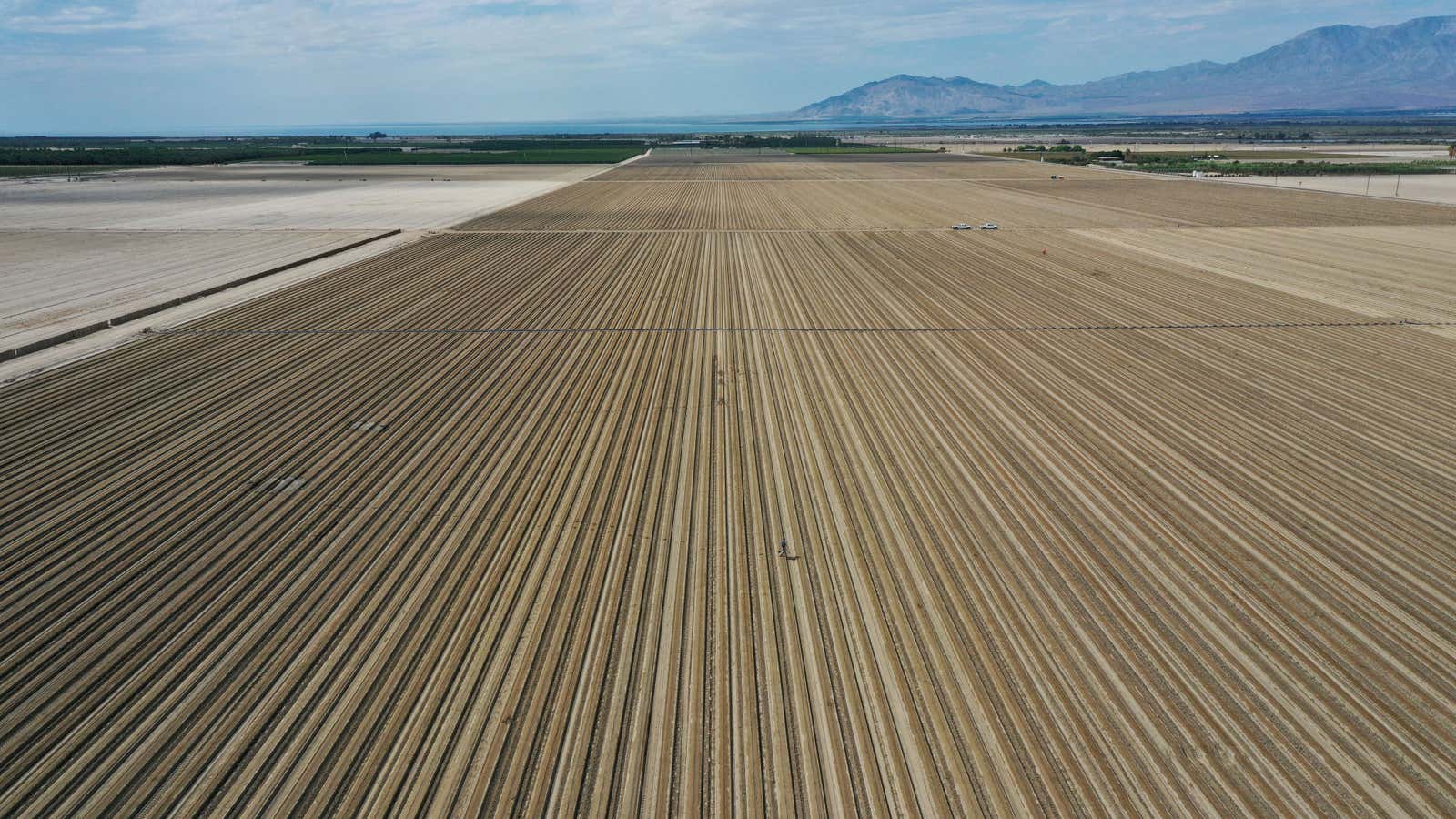The governors of 10 states in the American West recently called on the Biden administration to declare a drought disaster. It follows an intense summer of drought and record-breaking wildfires across the whole region. It’s been a month since the letter was sent and the administration has yet to act on it.
Data from the US Department of Agriculture (USDA) show that pasture and range conditions have been in decline for quite some time. Pasture varies in its uses but is important for harvesting livestock feed like hay, and provides range for animals to roam and graze. Less quality pasture means less food for livestock and other animals, which could lead to higher prices for meat and dairy products—or even a shortage. It also means more yellow and brown in typically green landscapes.
Drought is hurting US pasture and range
The USDA ranks pasture conditions from “excellent” to “very poor”, with “good” meaning yield prospects are normal. During the past two decades, only small portions of US pasture have regularly been in “excellent” condition but typically about 75% of US pasture is rated at least “fair.”
Conditions have continued to trend away from good since 2015. The portion of pasture and range rated “poor”, and “very poor” has increased—meaning more and more crops and grasslands are undergoing stress.
Less feed means higher prices
The cost of animal feeds is already going up for farmers, just as it did when pastures suffered in 2012. Though today, pandemic related supply chain issues and higher fuel costs are also contributing to the trend. Some areas are reporting shortages among increased prices.
California’s second drought in three years
“You have situations in central California where there’s not sufficient water at all and farms are collapsing, farms are failing,” said Rick Mueller who manages tools that measure crop conditions and soil moisture for the USDA. “It’s just a really hard cycle that we’ve been going through now.” Major drought started in California around 2011, broke around 2018 and now it’s back again. “It’s a matter of farmers being able to adapt and react to the climate that’s around them.”
Short term price increases, long term food supply risks
According to the letter, “There is little to no animal feed across much of the west, requiring farmers to import feed from out of state…Hay prices have skyrocketed, ranchers are selling off their livestock and others are considering selling prime agricultural lands for development.” The letter warns that drought could have long-term impacts on the food supply, wildlife, and livelihood of Americans in the West as these conditions persist.
As states lack resources to deal with drought and wildfires, among climate disasters of all kinds, national US disaster policy will need to reform. State lawmakers are asking the federal government to provide support beyond what is available through existing emergency programs.
Read the full letter below:
